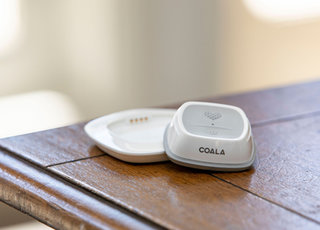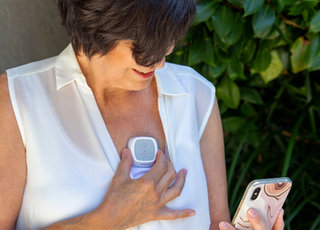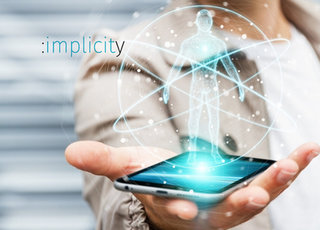RPM´s siren call to electrophysiologists: “It’s like cardiology on wheels. …connecting the patients to their cardiologists like never before”
By David Lin, MD
Director, Remote and Ambulatory Monitoring,
Cardiovascular Medicine, Penn Medicine
David Lin, MD is the Director of Remote and Ambulatory Monitoring for Cardiovascular Medicine at the Hospital of the University of Pennsylvania, where he also holds a position as Associate Professor of Medicine. His expertise covers the full range of arrhythmias, including in pregnant women and in people with congenital heart diseases, as well as implantable cardiac devices, and remote cardiac patient monitoring. He is Board-certified in clinical cardiac electrophysiology and has been recognized in successive editions of America´s Top Doctors, Best Doctors in America, and Philadelphia Magazine´s annual Top Docs annual rankings.
The coronavirus pandemic, for all its deleterious effects and the havoc it has wreaked on the health care system and the economy, has been a blessing in disguise for the clinical cardiology community, and electrophysiology in particular. The restrictions on movement it has imposed has accelerated transformations that were already under way, such that what we have accomplished in the last four to six months is way more than what we were hoping to accomplish in the last few years in terms of giving patients the option of remote virtual visits. I think this option is here to stay and will become a permanent part of our practice.
Technologically speaking, the capability of cardiac implantable electronic devices (CIED) to transmit data remotely has been around for many years. However, the utilization of the technology and adaptation into our practices was quite variable. We were ready for this shift even before the pandemic and if there was some “feet-dragging” it has not been due to a lack of preparedness but rather due to institutional resistance, including reluctance of insurance companies to embrace this aspect of patient care.
In the past six months, app-based remote patient monitoring has gained steam not only because of the pandemic, but also because of the ever wider use of Bluetooth technology. This technology makes possible direct communication between the device and the app, without a need for a separate base unit.
The current generation of pacemakers, defibrillators, and implantable loop recorders come with remote transmission capabilities. Beyond that, many of the CIEDs are now migrating to phone-based apps, which makes the process of remote monitoring even more accessible. It gives more autonomy to patients since all they have to do once their device is connected with the phone app is keep an eye on it for any alerts. The need to be physically tied to a phone land line or home transmitter is becoming less and less of an issue. The device runs its own diagnostics daily and if nothing unusual occurs, the device does not send that information. It will only send out a reminder when it´s time for a regularly scheduled visit or if it detects a parameter that is out of the normal range. For example, if the device´s battery is running low, detects an arrhythmia such as atrial fibrillation or ventricular arrhythmia or if the patient received a defibrillator shock in the middle of the night while they were asleep, it will record these particular events and send a notification to the physician so that they can contact the patient and have them come into the office. This gives users peace of mind that someone is watching over their device and it also reassures practitioners that they are not going to miss anything that may warrant their attention outside of the office setting.
This example is one of many that goes to show that cardiac electrophysiology is a perfect scenario for remote monitoring. We can get so much information about the patient from the device without having them come in, it´s like cardiology on wheels where the care can be delivered to the patient in the comfort of their own homes! With the ability to do video chats, we can even do post-surgical wound checks when a patient gets a pacemaker or defibrillator implantation. We can just have them hold up their phone camera and look at the wound.
One of the challenge that apps and remote monitored devices have yet to solve is how to get a reliable EKG or and the ability to perform a physical assessment. For 12 lead EKGs and to examine a patient, the patients still have to come to the clinic. There are several available and affordable mobile EKG units that are making an effort to meet this need, where one can place their finger on a little plate and it will record and transmit their EKG, and if you are looking just for a heart rhythm, that is more than adequate. Good quality ambulatory blood pressure cuffs that one can purchase at the local pharmacy are ubiquitous. There is increasing interest, is how well these app-based tracing units can measure a QT interval on a single EKG tracing and its accuracy compared to a proper 12-lead EKG performed in the clinical setting.
Other aspects of cardiology that can be done remotely such as imaging the heart are also being brought to the forefront of telehealth. Echocardiographic machines are becoming smaller and there are electronic stethoscopes that able to detect murmurs as well as irregular heart rhythms. Challenges in managing time, incorporating the technology into busy practices, insurance reimbursement, patient privacy, and handling the wealth of data that come pouring in and the future role of artificial intelligence in processing these data… now that´s a hard nut to crack for engineers and clinical software developers looking for a challenge.
I believe when it comes to devices and patient monitoring for arrhythmias, eventually up to 50 percent of outpatient cardiac electrophysiology work can be done remotely. It is not going to replace face-to-face visits for everyone, but for select patients, select populations, and select subspecialties within cardiology, that is certainly possible. It is a reality we should aspire to and do our best to accelerate, with or without a pandemic. We live in a world where convenience is expected. Just about anything can be ordered online and delivered straight to the home. I see a future where cardiac care can also be delivered right to the patient’s home.







